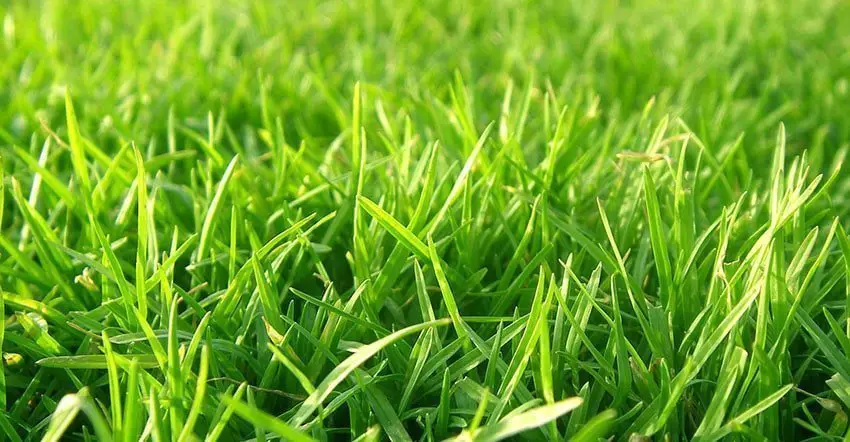How Long Does It Take for Grass to Grow

It seems like a simple question. After all, we all see grass around us everyday, and it seems to be growing at a pretty standard rate.
Once you are in the position of planting seeds in your new, bare-dirt backyard – the question doesn’t seem as elementary anymore. It takes on new urgency when you are looking to ensure you get your grass established before eiither the hot of midsummer or the cold of winter.
We’ll try to answer the question of how long it takes new grass to grow in this article.
Plan Ahead To Avoid Pain Later
It is important to plan ahead when growing grass from seed or sod so you can make sure you are ready for the optimum growing time.

Time of Year
In most climates planting your grass seeds in early autumn is the prime time for healthy grass growth. There is still adequate sunlight and soil will still be warm to help germination, while the cooler nighttime air and rain will help the seeds from drying out.
The other ideal time is mid-spring after the last frost danger has passed. Grass seedlings like cool wet weather – and that describes Spring in most parts of the country.
Soil Prepping
There is also time needed for prepping the soil and correcting it if needed. Soil prepping involved removing all old sod and cleaning out any unwanted visitors in the soil. Soil testing must be done next in order to gauge the pH, structure, and nutrient level of the soil and then correcting any problems. This whole project is going to take three to eight hours depending on the size of the plot and how much work you need to do to clean up the soil.
Choosing Seeds
It is important to choose the right seeds for your location. There are warm seeds which grow best in 80 to 95 degrees (Fahrenheit) and cold seeds that thrive in 60 to 75 degree weather. Warm seeds will grow during warm weather but lay dormant in the colder months, while cold seeds grow year round. There are also Smart Seeds that can be more expensive but are designed for specific places. Planting your seeds should take a couple hours but take your time and do it right.
Grass Growth
It takes four to ten weeks for grass to become established. The length of time really depends on the mix you are planting, and how well watered you can keep the new grass. Remember that maturity will take a full season. Once the grass has reached this point it is safe to walk on without risk of destroying the grass. Try to avoid walking on the grass as much as possible that first 3-6 months.
You should wait three to four weeks after you plant your seeds to see where your blank spots will be and then you can replant in those specific areas. Doing this too early does not give the seeds that are already there a chance to grow and you could potentially ruin that grass.
You should water your grass religiously to keep it continually moist for the first two weeks and then you can slowly tapper off. The first mow of this new grass should be when it is three inches tall and you should only cut at most one inch off. It is important to use a good mower with sharp blades to keep your grass healthy.
Possible Problems
If you are having difficulty growing grass on your land or you are not seeing the results as quickly as expected there could be a problem in the seed germination process.
Watering
Watering is usually the problem that hinders grass growth for homeowners. Too much water drowns the seeds and not enough water makes it impossible for the seeds to germinate. A good rule of thumb when watering grass is to keep it continuously moist. This can be a pain to do manually, so make sure you have some decent sprinklers you can set and forget to help you.
Some seeds will take longer to grow – this doesn’t mean they aren’t healthy. A full coverage of watering will give these laggard grass seedlings the boost they need to catch up with their neighbors. The full cover of moisture should be continued until there is thick green growth. If in doubt, keep up the watering an extra week and revisit.
Over-seeding
Even though seeds are tiny, less is more when planting them. Putting too many seeds in one area can make it hard for them to all get enough nutrients and water. Different types of grass seeds mixed together can also make the germination process more difficult so try to stay with a single type of seed and space them out for optimum growth.
Location
Where you choose to plant your grass seeds can also be an issue. If you are planting in a “high traffic zone” where people will be walking or disrupting the seeds in any way can make it difficult (if not impossible) for seeds to germinate and grass to go. Another common problem is wildlife like birds and squirrels stealing the seeds. It is a good rule of thumb to never plant anything near bird feeders where they expect to find food. Lastly, make sure there is a lot of sunlight where you plant your seeds so photosynthesis can occur.
So – Just How Long Does It Take To Grow Grass?
If everything is done correctly you should have full green grass in six to twelve weeks. It is important to note that this grass is still young and susceptible to damage so please keep off it as much as possible for the full season for best results. The prepping may seem excessive but it is important for the healthiest grass. To keep this grass healthy for years to come water it (don’t drown it) three to four times a year and apply fertilizer three times a year.

